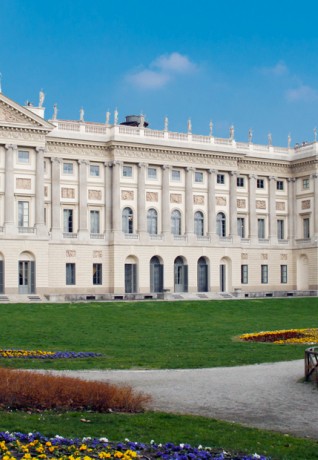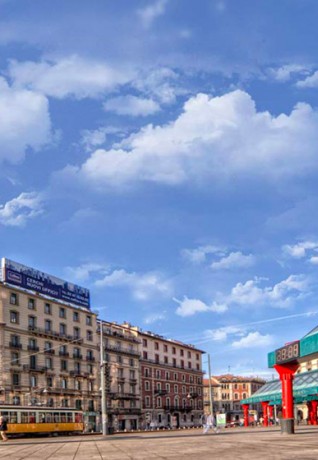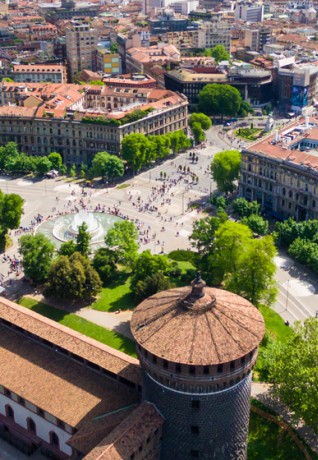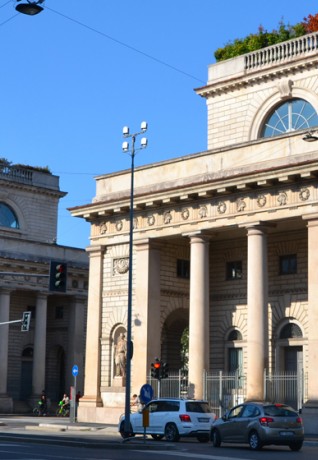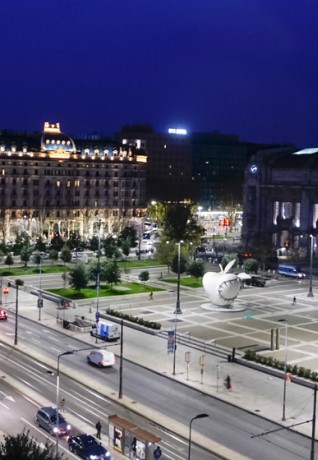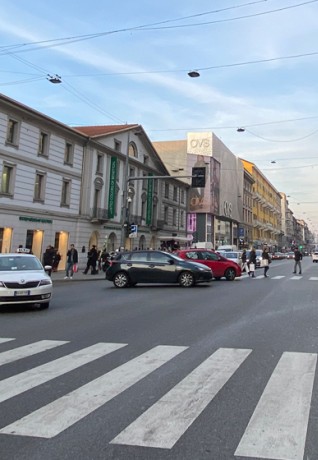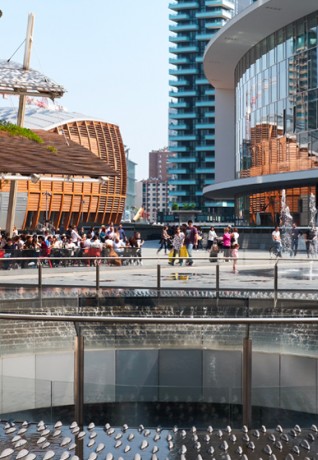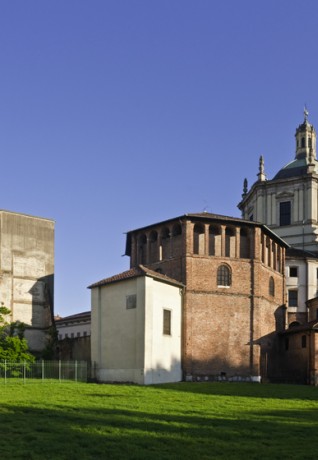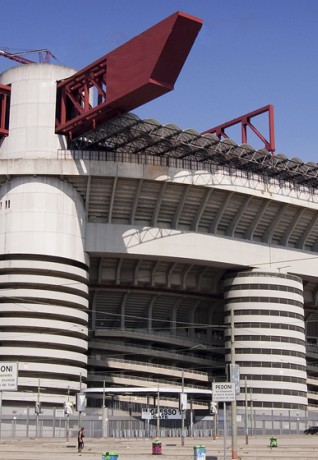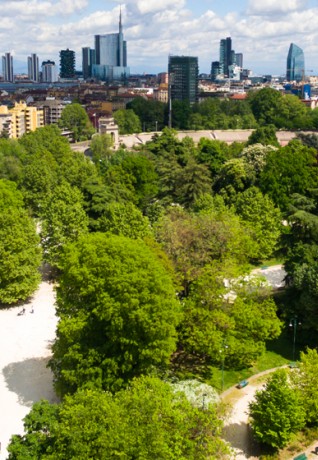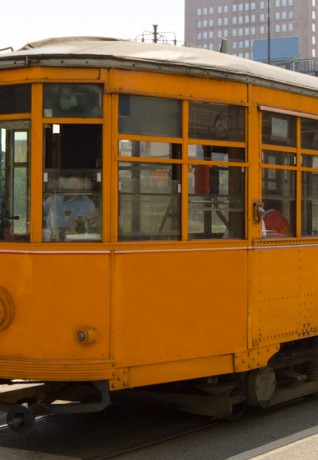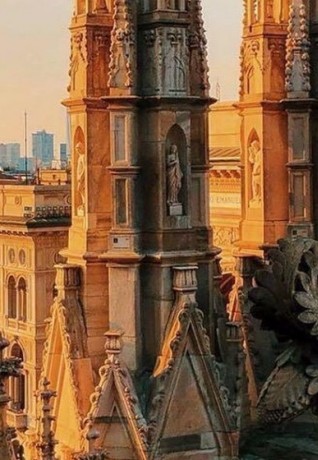Accessible itinerary: the road of the Abbeys
From Certosa di Garegnano to Abbazia di Viboldone
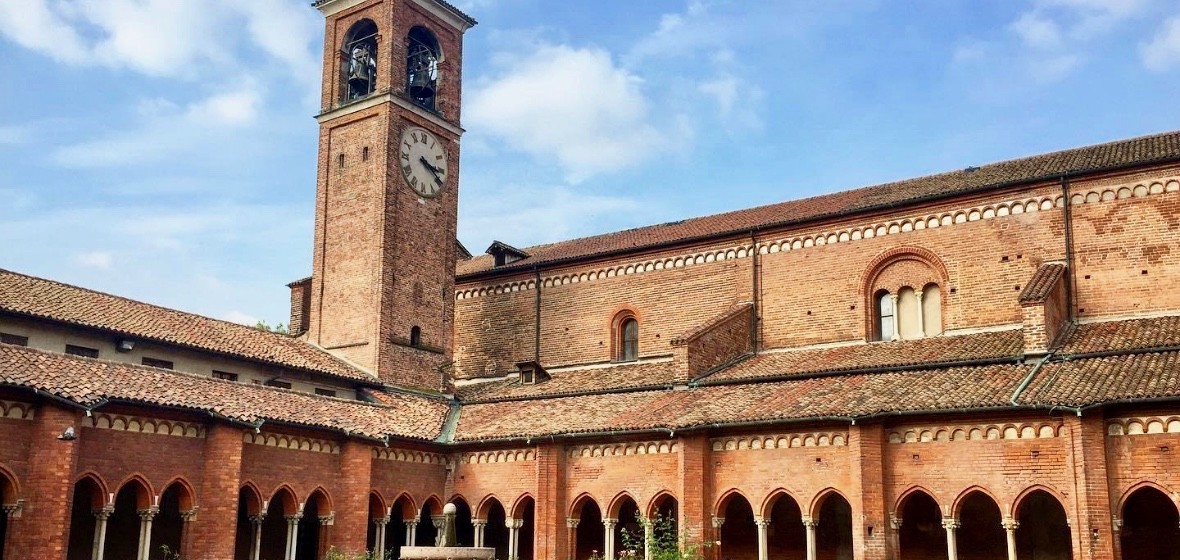
The itinerary includes three important places of worship in the Milanese area, precious pieces of the city's history, its art and its economic development: the Certosa di Garegnano and the Abbeys of Chiaravalle and Viboldone. For people with disabilities, the easiest way to reach them is by car. The abbeys of Chiaravalle and Garegnano can also be reached by public transport.
How to get there
It is possible to park along the road near the Certosa. About 20 m from the main gate, there is a parking space reserved for disabled parking permit holders.
As an alternative to the car, you can use the tram 14: the cars are all accessible to people with disabilities but only some stops are accessible.
For more information for passengers with disabilities, please visit the ATM web page.
The Certosa di Garegnano is a monastery inhabited by Carthusian monks. Its name comes from the “Grande Chartreuse” (Great Charterhouse) which is located on the Chartreuse massif in the French Alps.
The complex, dedicated to our Lady, was built between the 16th and 17th centuries inside the Bosco della Meralata. In 1562, the church was renovated in late Renaissance style. The facade of the Charterhouse has mixed modules with Renaissance and Baroque styles composed of many statues, obelisks, friezes and flames. It consists of three orders marked by Corinthian pilasters dividing the various niches containing effigies of saints and bishops.
The ceiling is dominated by an octagonal lantern, while the whole church has a single barrel-vaulted nave and geometric stuccoes. You can admire the famous pictorial cycle, made in two stages by Simone Peterzano (the master of Caravaggio).
The vault of the chapter house has a beautiful fresco representing San Michele. Although without the large cloister (destroyed during the Napoleonic secularization) and lapped by the overpass that takes to the highway, the Certosa is a monument of considerable interest.
How to get there
Chiaravalle Abbey is located in the South Milano agricultural park. For those arriving by car, it is possible to park in via Sant'Arialdo on the right side of the abbey, where there are two parking spaces reserved for disabled parking permit holders; it is also possible to use a free parking lot at about 100 m with 40 parking spaces, 5 of which are reserved for disabled parking permit holders.
The Chiaravalle Abbey can also be reached by public transport: once at the Corvetto stop of the M3 underground line (equipped with lifts), take bus n.77 or get to the Rogoredo stop of the M3 underground line (equipped with lifts) and then take bus n. 140. Buses n.77 and 140 are accessible to wheelchair users, but not all bus platforms are suitably accessible.
For more information for passengers with disabilities, please visit the ATM web page.
Chiaravalle Abbey was founded in the 12th century by San Bernardo di Chiaravalle. Its foundation marked an important moment in the history of Milano: thanks to the reclamation of the surrounding land and the hydraulic works carried out by the monks, this area experienced an extraordinary agricultural and economic development.
The abbey also is one of the first examples of Gothic architecture in northern Italy. In addition to its elegant lines, you can admire the interior frescoes of the church, made between the 16th and 18th centuries by important Milanese artists such as Bernardino Luini and the Fiammenghini brothers. The bell tower, known as the “Cirbiciaccola”, is characterized by hanging arches with worked frames and accompanied by white conical pinnacles. Even today, the bell is manually operated by the monks.
The monastic community was suppressed in 1798 by the Cisalpine Republic wanted by Napoleon Bonaparte and then the Abbey fell into ruin. Restoration works began only in the 19th century and in 1952 Cardinal Ildefonso Schuster allowed the return of a community of monks to the abbey.
The visit includes the church, the cloister and the chapel of San Bernardo.
To visit the old mill it is necessary to book in advance. For more information, please visit: https://www.monasterochiaravalle.it
For more specific information on the history and cultural richness of this area centered on the Abbey of Chiaravalle, please visit the site of the "La Valle dei monaci" project: https: // www.valledeimonaci.org
How to get there
The Abbey has a car park where there are 20 parking spaces, one of which is reserved for disabled parking permit holders.
There is no public transport in the area surrounding the abbey. About 1 km away, there is the 121 bus line operated by Atm (San Giuliano Milanese FS stop) and the z420 bus line operated by Autoguidovie Sud-Est (stop Roma-SP 164 at the San Giuliano Milanese station).
For more information for passengers with disabilities, please visit the ATM web page.
For the beauty of its architecture and its fourteenth-century frescoes, the Abbey of Viboldone is one of the most important medieval complexes in Lombardy. The church was founded in 1176 by the Umiliati and was completed in 1348. The monks and nuns who lived there led a life of prayer and work, dedicating themselves above all to the processing of wool and the cultivation of the fields, with absolutely innovative techniques for the time.
The Viboldone Abbey was closed by the Austrian government and for decades was abandoned. Only in 1940, on the initiative of the Cardinal of Milano Ildefonso Schuster, the Benedictine nuns returned to live in the cloisters of the building.
The church has three naves with five bays each, framed in transverse pointed arches. The first span is in Romanesque style, while the others, built during the thirteenth century, are Gothic in style. The keystone, at the centre of the crosses, is surrounded by segments enclosed in a circle, with the colors of the rainbow, a sign of God's friendship with humankind. The church houses several famous Giotto school frescoes.
The Friends of the Viboldone Abbey association (http://www.amicidiviboldone.it) organizes guided tours on request.

 Log in
Log in


